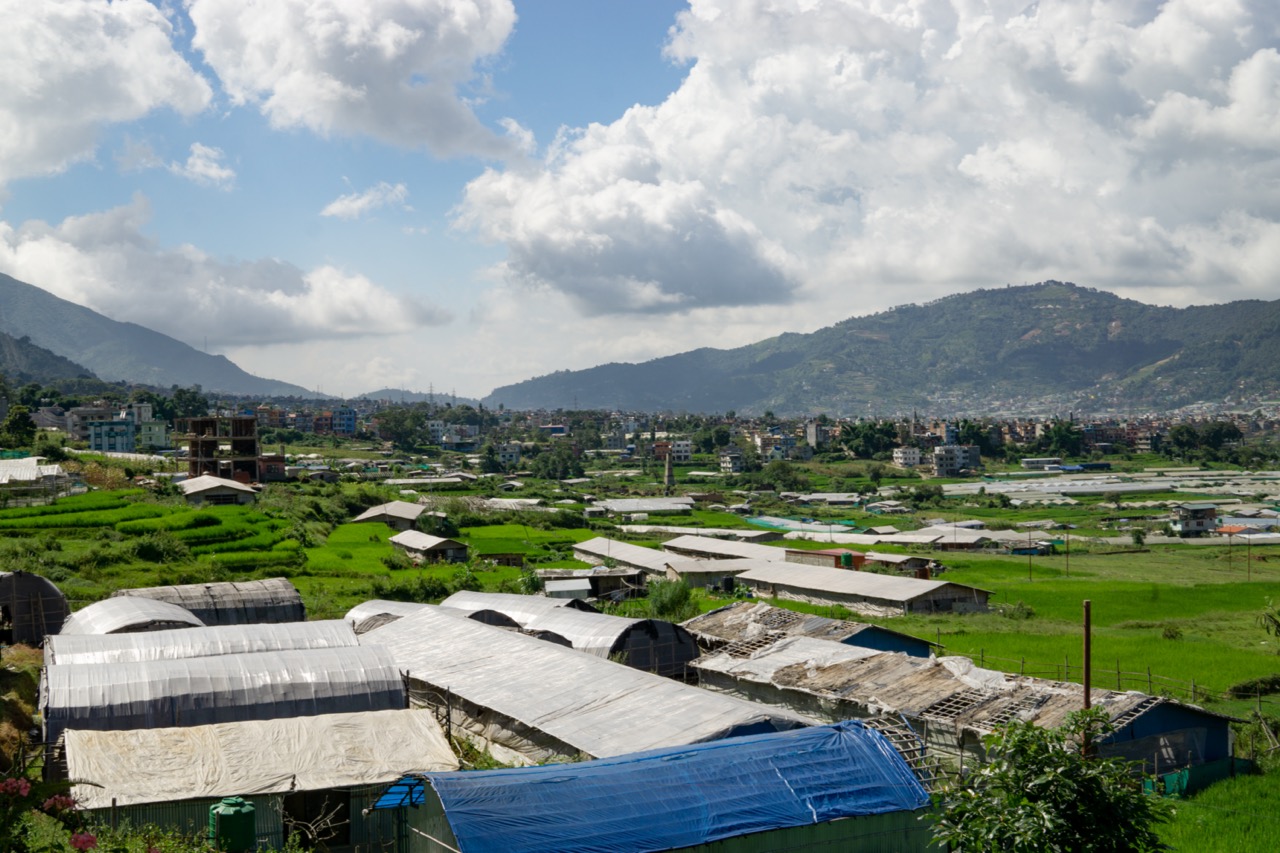Project gets underway: Kirtipur Hospital
After two days too many in central Kathmandu, I headed out to the suburb of Kirtipur which is to the south east of Kathmandu proper, to observe for a few days with the Kirtipur burn hospital - a much different pace of life in suburbia. There was finally enough space to run, and the wind blows from the east, which means that the air is slightly better too. Stayed with a lovely host family and it felt quite rural, the honking of horns was replaced with a steady cacophony of braying buffaloes, roosters, and barking dogs. Also there were tons of leeches in the trees and streams.

As per the plan I shadowed for a few days with the doctors at the burn hospital. For obvious reasons, I did not take photos. Kirtipur functions as a national burn hospital and receives patients from across the country. This was my first experience with healthcare systems in developing countries and it was certainly eye opening. Burns are gruesome injuries and most treatment is focused on giving the body the resources - primarily hydration and nutrition - necessary for recovery, rather that .I also had extremely limited knowledge about burns and their treatment. Turns out burns are of the same magnitude, in terms of new cases as the HIV/AIDS epidemic. Also similarly to the the HIV/AIDS epidemic, fatalities are now concentrated in developing countries, with divergent survival rates between countries with developed health systems and those without.
One of the startling things to me was the disparity that exists between the developing world and the developed world, not in the overall instance rate, but in the outcomes. For the sake of comparison, I’ll use the US and Nepal.
Nepal is a country of about 26 million people, and in 2008 there were at least 55,000 burn injuries and 2,100 fatalities. This means about 0.21 % of Nepali’s were burned in a single year and that a given burn injury a 3.8% chance of being fatal. Source is here There are of course disparities in who and how people get burned - for example in my discussions with doctors here, women are more likely to suffer chemical burns, usually the result of an assault, whereas men are more likely to suffer electrical burns, as they are more likely to work in the rats-nests of wires which are ubiquitous. There is also a data problem, EHR’s are not a thing here and even determining the number of injuries presents a challenge, but for the time being we will not focus on that. During the same year, the US had about 300 million people, 410,000 burns, but fewer than 3500 deaths. This incident rate is of the same magnitude, in a single year 0.14% of americans are burned in such a way to require medical attention, but less than 0.9% of these injuries result in deaths. Source here.
I’ve said that the the injury rate is similar, but clearly there is a huge disparity in fatality, Nepali burns are more than four times more likely to be fatal than an American burn. Is this because the burns are simply more severe? The central limit theorem would likely have something to say about this.Survival rates for burns are generally measured as a factor of total burned surface area. In the US, patients who have burns covering around 80% of their body area will most likely survive. Conversely in Nepal, Kirtipur has not had a patient with more than 40% of their body covered by burns survive.So all of this begs the question why does this disparity exist? The short version seems to be training and infrastructure. There are not fundamental differences in injury, but clear differences in triage, medical transport, and access to care.
As I said at the top, rehydration is a key component of burn survival, specific immediately and copious hydration administered intravenously. Most patients that Kirtipur receives are at least 24 hours post injury, with a mean transit time of 12 hours (I’ll get to the transit time in a moment). During these periods, the patients do not receive any IV rehydration. Thus the patients, by the time Kirtipur receives them are often in shock and cannot be resuscitated. In the US, patients will receive access to IV rehydration during transport and also have access to things like a skin bank .Fundamentally there are two things a play here. First is the transportation issue - Nepal does not have a comprehensive highway system and patients face long transfer times in rudimentary ambulances without paramedics. From an economic perspective, patients families may hesitate to call an ambulance as the costs associated with an ambulance are often-times prohibitively expensive. Secondly, the first doctor that patients visit often immediately transfer them to the burn hospital as the social expectation is that the burn hospital is the best place for them. In reality, if the first doctor the patients visited was able to begin administering IV fluids and stabilize the patient, the survival odds might be higher. This is complicated by the fact that these doctors often have close relationships with their patients families, and if the patient were to die in their care (as opposed to dying in the care of the Kirtipur hospital), this relationship would be greatly damaged.
In the face of this reality, the physicians here are setting up clinical trials to experiment with using oral rehydration, which could be administered in an in-transit setting, inspired by US army reports on oral-rehydration’s potential from the battle field’s during the Desert Storm. Honestly shadowing presented a challenge for me - the injuries are graphic and the survival rates are quite low. I also felt largely useless - the field of specialization that I am interested in just is not useful here, the healthcare system requires other systems to progress. I can say something along the lines of a functional highway system would reduce patient mortality, but the conventional tools that I know are just not yet ready to be used in this context. Nonetheless an informative experience and good lesson in how healthcare systems are subject to the constraints of the political and cultural climates in which they exist.
I am off to the Manaslu massif to trek for two weeks and get a sense of the countryside and landscape next. Then I am heading to Rwanda to work with a group on rural access to oncologic care.
